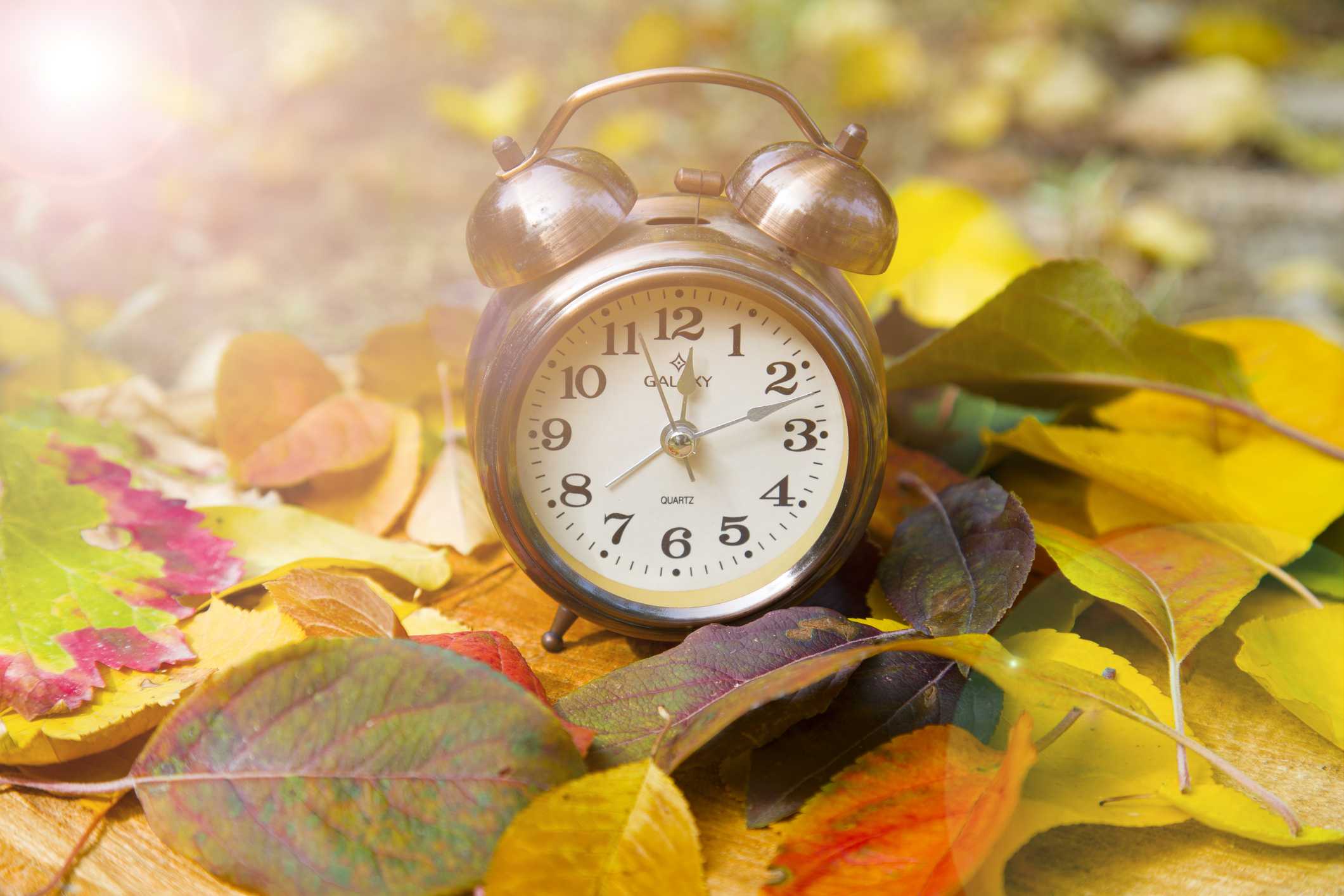Time to Change the Clocks Back!
Every spring in Québec, we move the clocks forward by one hour. This happens at 2am on the second Sunday in March. Then, in the fall, we move the clocks back again on the first Sunday in November, also at 2am. So, between mid-March to early November, we are in daylight saving time. In our time zone, we also call this Eastern daylight time. When the time is moved back again, we call it Eastern standard time.
Why Do We Change the Time?

Benjamin Franklin wrote an essay about this idea in a French newspaper in 1784. At that time, lighting cities and homes used a tremendous amount of electricity, so the goal was to take maximum advantage of daylight hours to save on energy. It took more than 100 years before countries adopted daylight saving time. Germany was the first to do it in 1916.
Here in Québec, daylight saving time was adopted in 1940. The objective was to save money and increase production during the Second World War. It allowed the province to synchronize its clocks with other countries, like the United States, which made it easier to manage things like trade and banking transactions, and air travel.
Nowadays, our technologies need far less energy. Lighting and heating our cities and homes has become more and more energy efficient. Our work hours have also changed, and people now work at many different hours of the day. What’s more, changing the time, even by one hour, has an impact on our bodies. This is why the Québec government is thinking about abandoning the time-change system. In fact, it has launched a public consultation to get feedback from Québec residents about it.
How Does the Time Change Affect Our Bodies?
The time change can throw off our bodies’ “internal clock,” also known as our circadian rhythm or biological clock. This 24-hour cycle helps our bodies know when it’s time to get up, to sleep, and to eat. When we move the time forward or back, our bodies can take a few days to adjust. Young children and elderly people, who often eat and sleep at fixed hours, can have their routines upset by this change.
Generally speaking, changing the clocks affects our sleep, and not getting enough sleep can affect our bodies in all sorts of ways and can lead to things ranging from mood disorders to strokes.
Science tells us that not getting enough sleep can affect our level of attention, something that increases the risk of car accidents. A study by the University of Colorado showed that moving to daylight saving time in the spring increased the risk of car accidents in two different ways: it affects our level of attention by disturbing our sleep hours and it robs us of the early daylight at dawn by shifting daylight into the evening instead.
Many other studies also suggest that the time change could have an impact on our heart health. A study published in the New England Journal of Medicine showed that the risk of heart attack increased in the two weeks following a time change. Another large study by the American College of Cardiology showed that 25% more heart attacks take place on a Monday after a time change compared to regular Mondays.
What’s Easier for Our Bodies? Moving the Time Forward or Backward?

For many people, moving the clocks forward in the spring feels harder than moving the clocks backward in the fall. Not only do our bodies lose an hour of sleep when we move the clocks forward in the spring but, for several days after, our bodies have to adjust to going to bed an hour earlier and getting up an hour earlier too.
In the fall, when we move the clocks back, we get the feeling that we get an extra hour, but that’s not quite true. As it turns out, since our bodies don’t instantaneously adjust, we may only get back about twenty extra minutes of sleep. Moving the clocks back also moves back our mealtimes, which can be tricky for our bellies! All in all, moving the time forward and backward is complicated for our bodies because our biological clocks don’t like to be disturbed. After a time change, our bodies can feel tired, and we can have trouble concentrating for a few days.
The best way to manage the effects of the time change on our bodies is to prepare for it gradually. For example, if you usually eat at 6pm and the clocks are moved back, your body will feel like it’s waiting until 7pm to eat. So, the trick is to eat dinner a bit later for at least three days before the time change. Three days before, eat at 6:15pm. Then the next day, eat at 6:30pm, and the next day eat at 6:45pm. Then, when the time change happens, your body will only feel like it's waiting for 15 extra minutes to eat at the 'new' 6pm time.
Which Should We Choose: Daylight Saving Time or Standard Time?
Saskatchewan and Yukon abandoned daylight saving time several years ago. If we want to do the same here in Québec, we’ll need to choose between daylight saving time or standard time.
Choosing daylight saving time could be an attractive choice because it brings daylight hours later into the evening during the summer. This would also be true for the short winter days in December and January when sunset comes early at the end of the afternoon.
Yet, most scientists agree that keeping to standard time would be best because our bodies need early morning light to wake and regulate our biological clock. If we chose to use daylight saving time all year round, when winter comes, many would arrive at work or at school while it is still dark outside. Missing out on sunlight in the morning could, over time, be bad for our health. Moreover, if we chose to keep standard time all year round instead, the sun would set earlier in the summer which could help some of us to get to sleep better.
Will we keep the time-change system? Will we abandon it and use standard time all year round, or daylight saving time? Will we split the difference and change the time by 30 minutes? We won’t know right away, so while we wait, you’ll have to change your clocks back in a few days!
